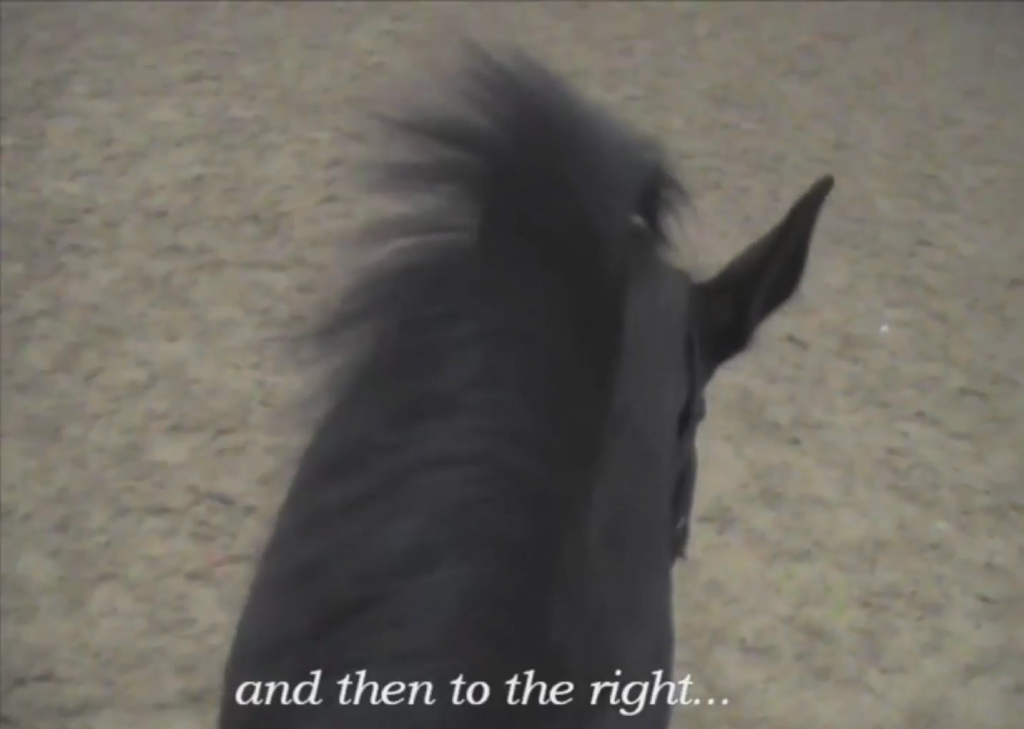Lateral Flexion: You really can't get bend without it!
A member of my 5 day Balance Challenge was having trouble with her horse's bend. She asked me a question regarding the lesson on teaching a horse lateral flexion. Lateral flexion is a Must Have skill for every horse.
Not having it is a main cause of the balance issues shown in the first video in the Free, Secret to Making Obstacles Flow. You can sign up for it HERE.
But first:
Read on to discover WHY lateral flexion must come before bend.
Lateral flexion refers to the bending of the atlas/axis joint (first one behind the ears). It allows the head to turn left or right independently of the rest of the spine bending.
It is very common for horses to be resistant or stuck in at least one direction. For example, if you are turning right. They may appear to have the right bend, but they are still looking left.
This affects their balance.
Loss of balance can cause them to speed up, slow down, drift sideways, or elevate their head. These deviations often cause them to land harder on the legs on one side of their body, leading to premature wear.
These problems become more apparent as we ask them to go faster.
Her question was:
"We may sometimes get flexion with just that one joint at a halt. In motion I think we almost always get too much bend instead, especially at a trot. Should I just keep trying for that one joint at a walk?"
The answer is:
Yes.
Practice more lateral flexion at a halt then walk as well.
The neck bending more than the line of travel means insufficient outside rein.
A horse that doesn't want to flex the way you're asking, may try to give you more bend in answer to your request.
You need to stop unwanted or excess bend from happening when you ask for the inside flexion.
Each speed increase means you have to reteach them that it IS possible to bend that one joint.
Any tension in that joint will be felt throughout the body.
If you can't get the one joint with a straight neck, you won't have it with a bent neck.
It is not something you will accomplish quickly, but is something you have to be consistent in asking for. They will naturally flex to their easy side, even on a straight line,
So they're not truly straight.
It's like us always sitting on one end of a sofa. Our body collapses on the inside and we lean on the outside arm rest.
When we sit at the other end it feels really awkward and we don't like it.
Your body is used to the habit of sitting bent the other way.
You'll notice the same collapse if you stand in front of a mirror.
Your hips will be slightly to the outside, or your inside shoulder will be lower.
With your horses flexion issues, you want to practice at all gaits.
Knowing that it will come easier at the lower gaits at first.
It will eventually become a new habit for both of you.
I cover this in detail in the Beyond The Basics section of the Working Equitation Mastery Online Program.
But Sign Up NOW for the Free, Secret to Making Obstacles Flow that I mentioned at the beginning.
And a few days later I'll also email you access to the Flexion lesson, to try with your horse.
Comment below and share your thoughts on lateral flexion.
Do you have it?
Do you want it?
What happens to YOUR horse when you don't have it?
You CAN learn how to improve your horse's skills from online courses and tips such as these.
But only if you implement.
So when you read my articles (and after you get the Flexion lesson) write down the steps as a reminder for what you're going to try in your next ride.
Take them to the barn and try them out.
Come on back when you're done and let me know how it went.


What a wonderfull explanation. This is a problem that I experience when riding my driving pony. As soon as we try something new, he gets tensed and increases his speed, or drops his shoulder and falls inward or drifts away. I have to go back to walk until he gives more flexion and start again with the exercise. This problem doesn't occur with my warmblood horses. My pony has a short back and is rather muscled, could that be a reason for his 'lack' of flexibility? Or could driving affect this (that's what my instructrice thinks).
Hi Anita, thanks for your question.
While any of those could be a contributing factor, this problem is one that nearly every horse I see has on one side just as we are right or left handed.
They may fool us that they’re flexing by over-bending the neck, but are they flexed the same direction in that first joint.
Isolating it with a straight neck is the best way to check.
I look forward to you trying the exercise with each of the horses and seeing if they can flex equally both ways with a straight neck.
Once they can, then you work on it mounted. And finally you also work on it in motion. This is something you can also ask for while driving.
It should preceed every turn. Starting on the ground, and then on his back will help it to come easier in harness where the rein-effect is slightly different.
Getting the flexion working equally both ways is the first step to improving balance and controlling the drift of the shoulders.